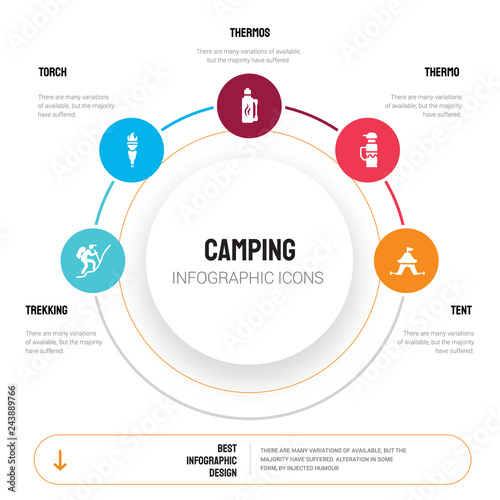If you camp on a regular basis in areas with rocks or sharp downed branches or just despise storing a wet, muddy camping tent, then a footprint is absolutely worth considering. Footprints are likewise fairly affordable contrasted to a brand-new outdoor tents.
What are the five types of camping?
Many tent makers supply their own certain impacts, which are reduced to the exact dimension of the outdoor tents floor. Nevertheless, you can make one on your own with a lightweight fabric like polycryo or tyvek.
Weather
Whether or not you require an impact actually depends on the problems you'll be camping in. If you're backpacking in a place where the ground is usually wet (it's practically inescapable), an outdoor tents footprint can be a valuable enhancement to your kit, as it will avoid your camping tent flooring from coming to be soaked.
However, if the footprint is too big it can serve as a dampness catch and potentially enable water to pool under your camping tent. This can be stayed clear of by making sure the footprint is cut a little bit smaller sized than your tent on all sides.
Generally speaking, it's finest to get an impact from the very same manufacturer as your tent to ensure an exact fit. They likewise have a tendency to be made from thicker, much more long lasting products than DIY choices. They can be costly for something whose single function is to secure the ground below your camping tent, however it can be a beneficial investment if you appreciate the durability of your gear.
Terrain
Numerous quality tents can work well without a footprint, especially those that have actually bath tub floorings made from resilient materials. However, the terrain you trek on can have a considerable effect on exactly how rapidly your tent floor breaks. Granite pieces, sandstone and various other sturdy surface areas use through the bottom of your tent much faster than verdant fields or forest floors.
A footprint or ground cloth aids expand the life of your outdoor tents by working as an obstacle between the ground and the sewn-in groundsheet of your tent, says REI senior sales specialist Elizabeth Nguyen. It additionally secures the camping tent from abrasive elements like sharp branches and rugged rocks that might puncture or tear the sewn-in floor. When picking a footprint for your tent, it is essential to ensure it's a little smaller sized than the tent on all sides. This prevents water from merging in between the tent and footprint throughout a rainstorm, which might seep right into your camping tent. The best alternative for an impact is to buy one designed for your details tent, which will certainly ensure a tight fit.
Outdoors Tents with Lower Deniers and Waterproof Rankings
Whether you're a laid-back backpacker or a hardcore adventurer, the durability degree of your camping tent is an important factor to consider. Tents made to be ultralight, verging on minimalist, often compromise some degree of longevity in the material and materials used.
One textile spec you'll encounter is denier, which describes the weight in grams of a 9,000-meter length of yarn that composes the camping tent's cover, rainfly, and/or flooring. A higher denier specification symbolizes much more rugged materials, while lower numbers show lighter and less durable textiles.
Other specifications to take a look at consist of floor measurements, vestibule size, and interior pockets. The previous reflects the total square-footage that can be utilized for livable room, while the latter can play a role in storage space by offering an area to stow away equipment overnight and in bad climate. Ventilation is additionally an important factor; as you breathe out moisture throughout sleep, it requires to escape, or condensation might develop within. Features such as mesh home windows and panels and adjustable rainfly doors assist increase air flow and stop this from occurring.
The Price
The expense of an outdoor tents can affect its efficiency, and it is also vital to consider just how much you can afford to spend. Backpackers looking for a lightweight sanctuary should aim for an outdoor tents with a livability score of at the very least two celebrities, and if possible, three or even more.
Livability refers to exactly how roomy an outdoor tents feels, with clearance and flooring dimensions playing a huge duty. Historically, backpacking tents utilized outstanding sloped walls and marginal space to conserve weight, yet modern products permit designers to give more comfort while maintaining weight low.
Storage space is an additional factor to think about, with vestibules and a quick-pitching layout helping reduce configuration time. In addition, the type of material layer and how the outdoor tents is stored can impact fancy tent camping long life. For example, a PU finishing that breaks down quicker when wet, or goes through duplicated cycles of stowing and un-stowing, can considerably reduce the life-span of a tent. Similarly, utilizing a personalized footprint instead of packing an outdoor tents in a haphazard way will certainly additionally extend its life expectancy.
How do I protect my tent from rain?
